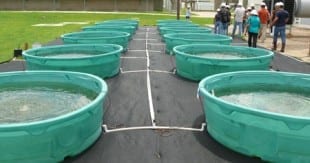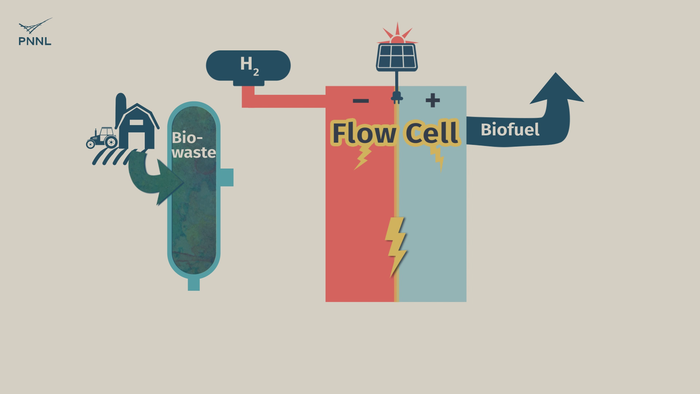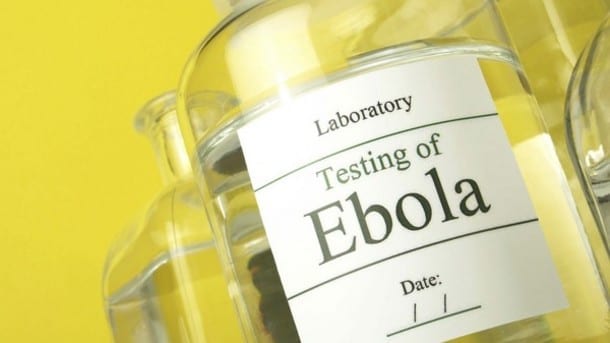
In one of the first studies to examine the potential for using municipal wastewater as a feedstock for algae-based biofuels, Rice University scientists found they could easily grow high-value strains of oil-rich algae while simultaneously removing more than 90 percent of nitrates and more than 50 percent of phosphorous from wastewater.
The findings, which are based on a five-month study at a wastewater treatment facility in Houston, are available online in the journal Algae.
“Biofuels were the hot topic in algaculture five years ago, but interest cooled as the algae industry moved toward producing higher-value, lower-volume products for pharmaceuticals, nutritional supplements, cosmetics and other products,” said study lead author Meenakshi Bhattacharjee, a 28-year veteran of algal research who joined Rice’s biosciences faculty in June. “The move to high-value products has allowed the algaculture industry to become firmly established, but producers remain heavily dependent on chemical fertilizers. Moving forward, they must address sustainability if they are to progress toward producing higher-volume products, ‘green’ petrochemical substitutes and fuels.”
Bhattacharjee said the algae industry’s reliance on chemical fertilizers is a double whammy for algae producers because it both reduces profit margins and puts them in competition with food producers for fertilizers. A 2012 National Research Council report found that “with current technologies, scaling up production of algal biofuels to meet even 5 percent of U.S. transportation fuel needs could create unsustainable demands for energy, water and nutrient resources.”
The 2012 report also pointed to wastewater-based cultivation as a potential way to make algae production sustainable. An added appeal is that the method could potentially address a looming environmental problem: nutrient pollution in U.S. waterways. According to the Environmental Protection Agency, nutrient pollution from excess nitrogen and phosphorous — the two primary components of chemical fertilizers — is “one of America’s most widespread, costly and challenging environmental problems.”
Wastewater treatment facilities currently have no cost-effective means of removing large volumes of nitrates or phosphorous from treated water, so algae production with wastewater has the potential of solving two problems at once, said study co-author Evan Siemann, Rice’s Harry C. and Olga K. Wiess Professor of BioSciences.
“The idea has been on the books for quite a while, but there are questions, including whether it can be done in open tanks and whether it will be adaptable for monoculture — a preferred process where producers grow one algal strain that’s optimized to yield particular products,” he said. “We were surprised at how little had been done to test these questions. There are a number of laboratory studies, but we found only one previous large-scale study, which was conducted at a wastewater facility in Kansas.”
Siemann said the Rice study was made possible by the participation of the Houston Department of Public Works and Engineering, which helped Rice’s research team set up a test involving 12 open-topped 600-gallon tanks at one of the city’s satellite wastewater treatment plants in July 2013. The tanks were fed with filtered wastewater from the plant’s clarifiers, which remove suspended solids from sewage. Various formulations of algae were tested in each tank. Some were monocultures of oil-rich algal strains and others contained mixed cultures, including some with local algal strains from Houston bayous. Some tanks contained fish that preyed upon algae-eating zooplankton.
“Prior research had suggested that diverse assemblages of algal species might perform better in open tanks and that fish might keep algae-eating zooplankton from adversely affecting yields,” Siemann said.
“We recorded prolific algal growth in all 12 tanks,” he said. “Our results are likely to be very encouraging to algae producers because the case they would prefer — monocultures with no fish and no cross-contamination — was the case where we saw optimal performance.”
Read more: Algae from wastewater solves two problems
The Latest on: Algae-based biofuels
[google_news title=”” keyword=”Algae-based biofuels” num_posts=”10″ blurb_length=”0″ show_thumb=”left”]
via Google News
The Latest on: Algae-based biofuels
- Investing in the Growing Algae-Based Supplements Market: Projected Valuation of US$ 4,804.5 Million by 2034 with 7.3% CAGR | FMI Projectionon April 23, 2024 at 11:50 pm
Algae-Based Supplement Market The market size for algae-based supplements is estimated to be around US$ 2,365.3 million in 2024. It is projected to exhibit a CAGR of 7.3% over the forecast period and ...
- Algae Products Market: Carotenoids and Blue-Green Algae See Strong Growthon April 23, 2024 at 6:30 am
The Algae Products Market is Booming and is Expected to Reach $7.3 Billion by 2028 at a compound annual growth rate [CAGR] of 6.4%!Chicago, April 23, 2024 (GLOBE NEWSWIRE) -- The algae products market ...
- Algae-based air purifier removes harmful chemicals from the airon April 16, 2024 at 4:36 pm
Taking a cue from photosynthesis — wherein algae naturally convert carbon dioxide and pollutants into clean oxygen — the AIReactor pumps air into the bioreactor and replicates natural water currents ...
- GSPI Green Star Products, Inc.on April 11, 2024 at 5:10 am
Green Star Products, Inc. produces algae based renewable burning fuels in the United States. It produces biofuels that can be used to create energy for home and company, including wood ...
- US government to award $18.8m for algae biomass researchon April 11, 2024 at 2:48 am
The U.S. Department of Energy’s Bioenergy Technologies Office (BETO) and Office of Fossil Energy and Carbon Management (FECM) have released the MACRO: Mixed Algae Conversion Research Opportunity ...
- SFCC biofuels team among finalists in nationwide algae competitionon April 3, 2024 at 5:02 pm
the college's algae cultivation program takes a hands-on approach to teaching students how to farm algae on a large scale, later used to produce biofuels, nutritional supplements and other products, ...
- SFCC biofuels team among finalists in nationwide algae competitionon April 2, 2024 at 4:59 pm
That was the question on Lance Miller’s mind when he learned that, in addition to classrooms, lab spaces and Ethyl the whale, Santa Fe Community College was home to some 10 barrels of the used ...
- Algae in Wastewater (IMAGE)on March 8, 2024 at 8:40 pm
Caption In one of the first studies to examine the potential for using municipal wastewater as a feedstock for algae-based biofuels, Rice University scientists found they could easily grow high ...
- Marine algae implants could boost crop yieldson March 6, 2024 at 8:22 am
An additional application of this research could be in the production of algae biofuels. There are a few ... Furthermore, there are land-based applications that could help people adapt to climate ...
via Bing News




